牧歌的な風景が広がる山の裾野で
飼い馬を先導する男性のもとに、
家出した娘が帰郷するという
知らせが舞い込む。
高峰秀子扮するリリー・カルメンと名乗るその娘がきらびやかな服に身を包み汽車から降り立ち、周囲の人々が驚嘆の表情で見つめる。そんな場面からはじまる木下恵介監督作品『カルメン故郷に帰る』は日本初のカラー映画で、1951年に発表されました。ハイカラで意気揚々としたリリー・カルメンの姿は、戦後を抜け出そうとする日本の前向きな姿を象徴しているようです。この年、戦後に日本を統制していたGHQによる交通規制が解かれ、以降、日本における人とモノの移動が本格的にはじまります。
A middle-aged man leading his horse through the idyllic landscape that rests at the foot of a mountain receives word that his runaway daughter is returning home.
As his daughter, now known as Lily Carmen (portrayed by actress Hideko Takamine), emerges from the train in her flamboyant attire, everyone stares at her in admiration. This is the opening scene of director Keisuke Kinoshita’s 1951 film, Carmen Come Home, which is celebrated as the first Japanese feature to be shot in color. The stylish and radiant Lily Carmen is a symbol for a country that is making positive steps toward postwar recovery. 1951 is also the year in which MacArthur’s General Headquarters lifted traffic control, marking the start of full-scale transport of people and goods in Japan.
今回のテーマは「旅」。
旅は乗り物の発達とともにありました。今回はその中でも、乗り物の発達が著しかった50年代、60年代、70年代を中心に取り上げます。
まずは50年代。51年10月に羽田~大阪~福岡をつなぐ日航国内線「もく星」の就航が再開したのをきっかけに、旅行が人々の間に浸透します。当時の『花椿』は主に、国内の身近な海や山への行楽提案が中心でした。野外ではどのような美容や装いが適当なのか、という実用的な疑問に応えながら、旅の企画をとおして自由と先進性をもった女性像を描いていました。
The theme of this issue is “voyage.” Voyages evolved in tandem with the development of transport. This issue focuses on the 1950s, 60s and 70s, which were identified as particularly dynamic periods of development in transport.
Let’s start with a look at the 1950s. In October 1951, Japan Airlines resumed domestic flights on its Mokusei aircraft, connecting Haneda, Osaka and Fukuoka, which led to the prevalence of travel among the populace. In those days, Hanatsubaki introduced readers to mountain and seaside resorts in Japan. In addition to providing useful tips regarding beauty care and fashion for the outdoors, the magazine portrayed women with the freedom to pursue innovative lifestyles through travel features.
国際線の旅客機が登場した54年2月からは行動範囲がさらに広範に。
福島慶子によるパリ旅行の話「今日の旅」や、ヨゼフ・ロゲンドルフのエッセイ「ロマンチックなドイツの高原」など、海外への憧れを醸成するような海外の渡航情報も誌面に表れるようになります。
The launch of international flights in February1954 further expanded the sphere of activities.
Hanatsubaki began featuring works such as Keiko Fukushima’s “Kyo no Tabi” (Today’s Voyage) in which she writes about her travels in Paris, Joseph Roggendorf’s essay “Romantic German Highlands,” and other information regarding overseas voyages that fostered sentiments of longing for traveling to foreign countries.
1955
55年にはトヨペットがクラウンを発表、
車に関する企画も増えました。
In 1955, Toyopet released the Crown, promoting an increase in motor vehicle travel.
1958
58年特急こだまの登場で、
旅行はますます身近になっていきます。
In 1958, the debut of the Kodama limited express service made travel an even more prominent part of everyday life.
※写真の著作権、モデルの肖像権について、現在許諾の申請を進めていますが現時点で連絡が取れていない箇所がございます。掲載内容に関してお気づきの点がある方、または取り下げを希望する方がいらっしゃいましたら、編集室までご連絡ください。
※We are in the process of applying for copyrights for photographs and model usage licenses, but we are still unable to contact the source for a few of the images. Please contact Hanatsubaki magazine if you have concerns regarding any of the images on this page, or if you would like to request the removal of any of these images.





